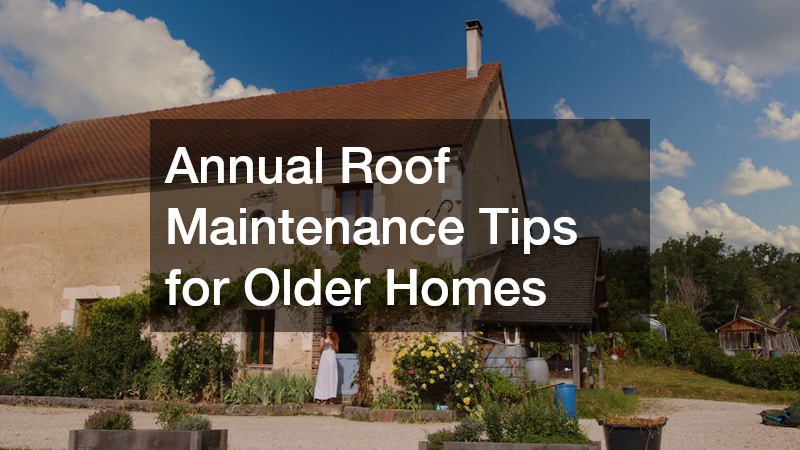Annual Roof Maintenance Tips for Older Homes
Owning an older home can be a rewarding experience, rich with history and character. However, these homes often require more care, particularly when it comes to maintenance and repairs. One of the most crucial yet overlooked aspects of maintaining an older home is regular roof maintenance. An aging roof can lead to numerous problems, including leaks, energy inefficiency, and even structural damage. Regular inspections and maintenance by a local roofing contractor can save homeowners from costly repairs and preserve the integrity of their homes. This article aims to delve into why annual roof maintenance is vital for older homes, exploring various aspects from inspecting materials to identifying potential issues early on.
Why Older Homes Require Annual Roof Maintenance
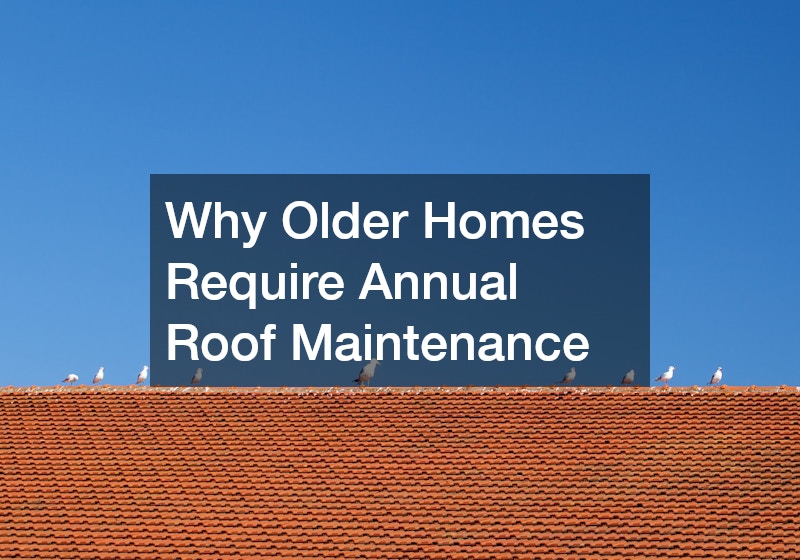
Older homes often have roofs that are nearing the end of their lifespan, making them more susceptible to problems like leaks and structural issues. A roof maintenance plan ensures that any minor issues can be addressed before they become major problems. Engaging a local roofing contractor who specializes in the unique needs of older roofs can help in identifying these issues early.
Seasonal roof maintenance is especially important because it allows for regular inspections of the roof’s condition. Over time, weather and environmental factors can severely affect a roof, necessitating timely repairs. Regular maintenance from roofing services not only prolongs the life of the roof but also saves money in the long run.
Furthermore, older roofs often have outdated materials that are not as durable or efficient as modern options. By conducting seasonal roof maintenance, homeowners can receive the latest recommendations for necessary updates from local roofers. This ensures the safety and efficiency of the home for years to come.
Knowing Your Roof’s Age and Material
Understanding the age and material of your roof is crucial in determining the kind of maintenance it requires. Different materials have varying lifespans and maintenance needs. Local roof repairs should be consulted to provide insights based on the specific materials used in your roof.
Annual roof maintenance involves checking for signs of aging specific to your roof’s material. For example, asphalt shingles may require different kinds of attention compared to a roof made of metal panels. Maintaining a detailed record of your roof’s age and previous repairs aids in a more focused maintenance strategy.
Moreover, certain roofing materials might need more frequent inspections due to wear and tear from environmental factors like rain and UV exposure. Working with local roofing company experts ensures that specific issues related to your roof’s material are adequately addressed.
How Aging Materials Affect Roof Performance
Over time, roofing materials begin to degrade, impacting the overall performance and efficiency of your roof. This is particularly true for older homes, where materials may not be as resilient as modern alternatives. Regular consultations with a local roofing contractor can help identify the extent of material degradation during annual roof maintenance.
Aging materials can lead to increased energy costs due to poor insulation. Furthermore, as materials weaken, they are more susceptible to leaks and other forms of water damage. Understanding these risks prompts timely interventions, such as local roof installation of newer, more efficient materials as part of annual maintenance checks.
Roof installations by reliable local roof repairs services can also integrate modern technologies, like improved underlayment or reflective coatings, that enhance the efficiency and performance of an older roof. This adaptation is critical for maintaining the home’s structural integrity over time.
Inspecting Shingles, Tiles, and Metal Panels
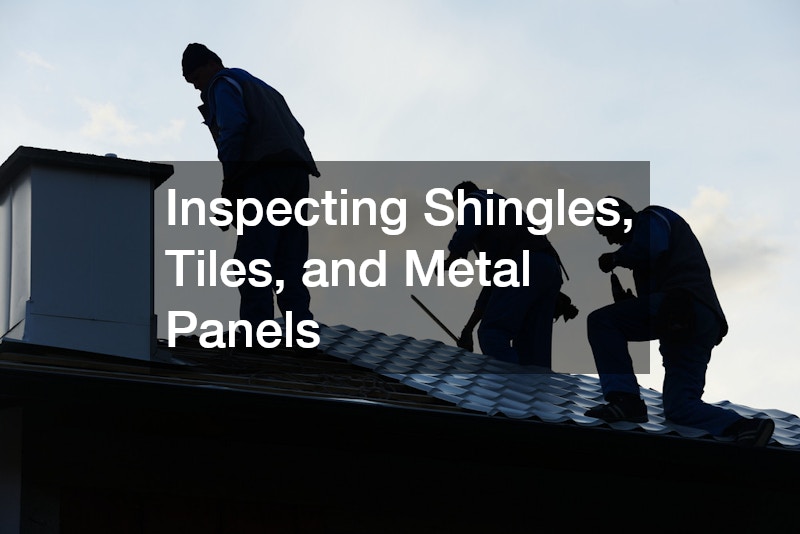
One of the core components of annual roof maintenance is the inspection of the roof’s surface materials, whether they are shingles, tiles, or metal panels. Each type of material has its own set of vulnerabilities that can be mitigated through regular inspection and maintenance provided by expert roofing services.
Shingles, for example, can become cracked or curled, providing an opportunity for water infiltration. Tiles might get dislodged or break, while metal panels are prone to rust over time. These issues, if not caught early during routine maintenance visits from residential roofing companies, could lead to severe damage.
Addressing the condition of these materials helps in maintaining the overall resilience of the roof. Routine inspections and maintenance offerings by local roofing company professionals ensure that even the smallest issues are promptly tackled, ultimately extending the life of the roof.
Checking Flashing, Underlayment, and Seals
Beyond the surface materials, components like flashing, underlayment, and seals also significantly contribute to the roof’s effectiveness. Flashing, often made of metal, is used to direct the flow of water away from critical parts of the roof, like chimneys or vent pipes. Proper inspection and maintenance by experienced siding contractors are crucial for this element. Rust, gaps, or loose flashing can lead to serious leaks if left unaddressed, making professional inspection vital.
The underlayment serves as a secondary barrier against moisture and is critical for protecting the roof deck. Over time, however, it can become brittle and lose its effectiveness, inviting leaks and water damage. During annual roof maintenance, these layers are closely evaluated for signs of wear. Replacing damaged underlayment promptly prevents water from seeping into the attic and causing structural damage. Homeowners should also check for bubbling or peeling under shingles, which can indicate underlayment failure.
Seals around roof protrusions are another area prone to potential leaks. Seals degrade over time, so their condition must be inspected annually to prevent water infiltration. Engaging local roofing company services for comprehensive annual maintenance addresses these critical areas, preserving the life and efficiency of your roof. Applying fresh sealant when necessary and inspecting after storms can prevent small leaks from becoming major problems. Documenting these inspections as part of your annual maintenance plan ensures ongoing roof protection and timely repairs.
Removing Debris to Prevent Water Damage
Debris accumulation is a common issue for older homes, where overhanging trees or architectural design may trap leaves and other materials. Regular removal of such debris is a fundamental part of annual roof maintenance, as it reduces the potential for water damage.
Residues from trees and other environmental debris can hold moisture, leading to rot and decay if not adequately cleared. This buildup can also obstruct water flow, causing water to pond on the roof surface. Collaborating with residential roofing companies to perform regular clean-up helps to alleviate these issues.
Through routine annual maintenance, a local roofing contractor can help ensure debris is removed efficiently, securing proper water drainage. This preventative measure safeguards against water damage and preserves the roof’s structural integrity for a longer period.
Gutter Cleaning and Maintenance
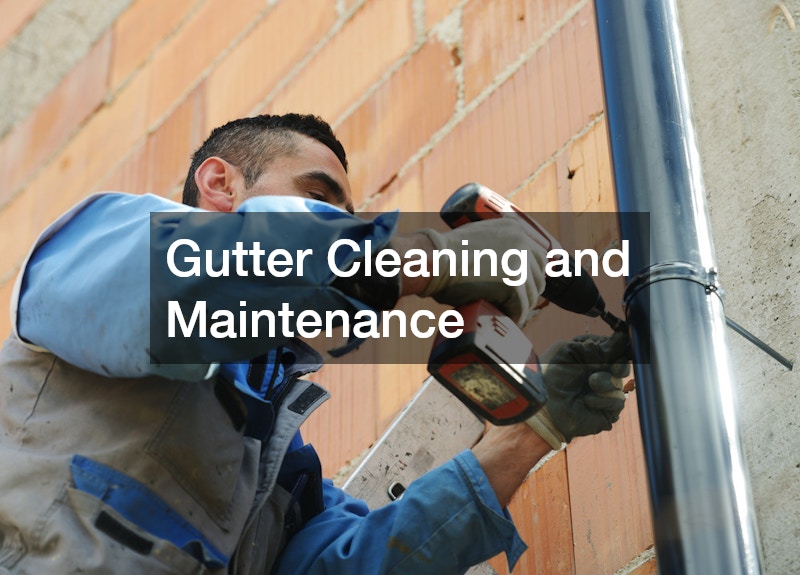
Proper gutter maintenance is essential to the health of your roof, especially in older homes that may have antiquated gutter systems. Gutters are designed to channel water away from the roof and foundation, preventing potential water damage. Inspecting gutters for rust, leaks, or sagging during annual maintenance helps identify weak spots before they worsen.
During annual roof maintenance, local roofers thoroughly inspect and clean the gutter system to ensure water flows freely. Clogs and backups elevate the risk of roof and foundational damage, particularly in older houses where such damage can exacerbate existing issues. Installing gutter guards or screens can reduce debris accumulation and minimize maintenance needs. Checking downspouts for proper flow ensures water is directed away from the foundation effectively.
Regularly maintained gutters, facilitated by a reputable local roofing company, ensure that water is efficiently diverted away, thus protecting both the roof and the home’s structural foundation over time. This maintenance is a crucial component of any comprehensive roof care strategy. Homeowners should also inspect gutters after storms to catch blockages caused by fallen branches or heavy rainfall. Keeping a seasonal log of gutter maintenance can help track recurring issues and plan preventive repairs more effectively.
Identifying Leaks and Water Damage Early
Early detection is key to effectively addressing leaks and water damage. Many older homes experience problems like leaks due to degradation over time. Annual roof maintenance includes thorough inspections by a local roofing company to identify and address leaks before they cause significant damage.
Traditional signs, like water stains on ceilings or walls and damp patches, are indications that a roof has begun to leak. Early intervention by residential roofing services allows for immediate repair, reducing the risk of extensive repairs or costly replacements.
Proactively identifying issues during routine maintenance ensures that any minor leaks are resolved before developing into major concerns. Engaging local roofers for annual checks seals cracks or replaces failing materials, thus maintaining the overall health of the roof.
Preparing Your Roof for Seasonal Weather
Different seasons bring different challenges for a roof, particularly in older homes that may have developed susceptibilities to weather-related stresses. Annual roof maintenance includes preparing your roof for these seasonal changes through repairs and reinforcements provided by a local roof replacement service. Inspecting for loose shingles or damaged flashing before storm season can prevent costly water damage.
During colder months, snow and ice can accumulate, causing strain and potential leaks. Meanwhile, summer months may introduce threats from extreme heat and UV rays. By consulting with local roofing contractor experts for seasonal preparation, your roof can be better fortified against these specific environmental hazards. Trimming overhanging branches before winter or summer storms reduces the risk of debris-related damage. Applying protective coatings or sealants in advance can shield vulnerable roofing materials from harsh weather effects.
Anticipating these changes as part of annual maintenance measures ensures the roof’s resilience across various weather conditions. This proactive approach, facilitated by an experienced local siding company, extends the life of the roof and reduces unexpected repair needs. Scheduling inspections seasonally allows for timely interventions, keeping older roofs safe and functional. Documenting seasonal maintenance helps homeowners track improvements and identify recurring vulnerabilities over time.
Protective Coatings and Sealants for Older Roofs
Applying protective coatings and sealants is an effective strategy for enhancing the durability of older roofs. These coatings act as an additional barrier against moisture, UV rays, and other elements, forming a significant portion of an annual roof maintenance plan.
Sealants are especially useful around flashing, vents, and roof edges, where the risk of leaks is highest. By enlisting local siding companies for specialized treatments, homeowners can ensure that the coatings used are best suited for their specific roof type and environmental conditions.
This preventive treatment is crucial in prolonging the lifespan of an older roof, minimizing the frequency and extent of repairs needed over time. Regular application as recommended by participating in annual maintenance ensures ongoing protection and cost savings.
Safety Tips for Roof Inspections
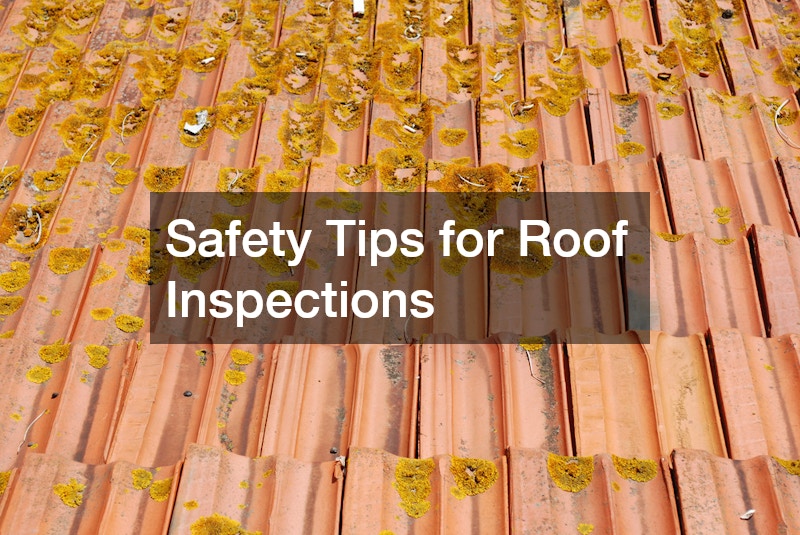
Safety is paramount when it comes to roof inspections, especially for older homes with potentially fragile roof conditions. Homeowners are advised to leave the inspection to professionals during yearly roof maintenance, minimizing the risk of accidents. Using harnesses, stabilizing ladders, and proper footwear are essential safety measures that professionals follow.
Professional local roofers are equipped with the necessary tools and safety gear to conduct inspections thoroughly and safely. Climbing onto roofs, particularly older ones, carries inherent risks due to potential structural weaknesses such as frail decking or loose shingles. Attempting repairs without proper knowledge or equipment can lead to serious injury or further roof damage. Hiring a licensed roofing professional ensures compliance with safety regulations and local building codes.
Incorporating safety protocols into your annual maintenance plan ensures that any potential hazards are managed appropriately. This not only protects those doing the inspection but also prevents unnecessary damage to the roof itself. Regular safety briefings and equipment checks before each inspection help maintain a consistent standard of care. Documenting safety procedures as part of your maintenance plan can also help homeowners understand the importance of professional inspections and avoid risky DIY attempts.
Yearly roof maintenance is an essential practice for owners of older homes. With shifting environmental conditions and the natural degradation of materials, consistent monitoring and upkeep ensure that roofs remain in optimal condition, preventing costly repairs. Partnering with a local roofing contractor, homeowners can receive tailored maintenance plans that address the unique requirements of their roof. By prioritizing annual roof maintenance and enlisting the expertise of local roofers, significant damage can be avoided, and the home’s integrity can be preserved for future generations. The investment in regular upkeep proves its value over time through enhanced durability and peace of mind.

